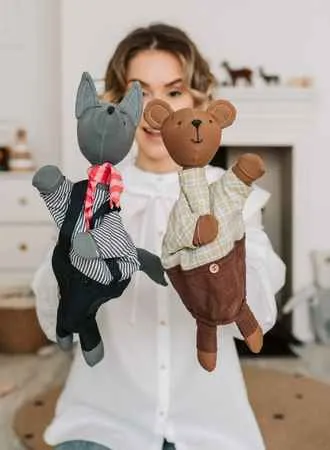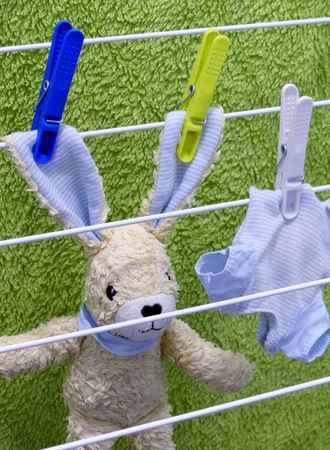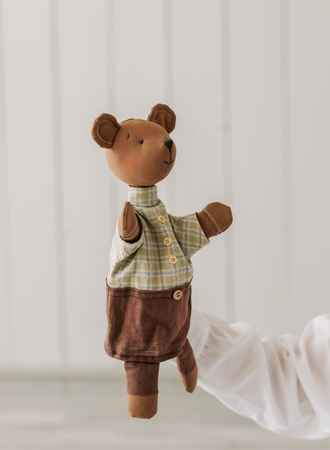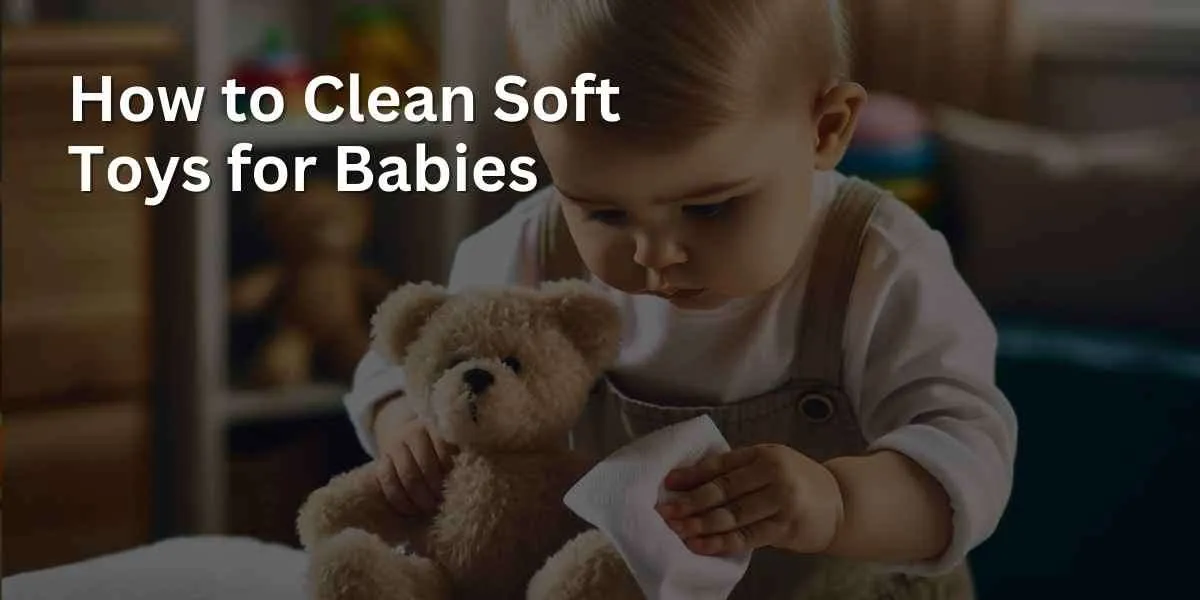As a parent, you want to provide your baby with the best of everything, including their favorite stuffed animals. But with constant use and love, even the softest of toys can become dirty and need a good cleaning.
Don’t worry, it’s not as daunting as it seems!
In this article, we will show you the best way to wash your baby’s stuffed animals, so they can continue to snuggle and play with their favorite friends. Keep reading to learn the step-by-step process for cleaning and sanitizing your baby’s stuffed animals.
Learn how to clean and sanitize soft toys for babies
Regular cleaning protects babies from germs and bacteria
Washing machines and hand-washing methods both effective for cleaning soft toys
Learn how to wash and clean plush toys and soft toys for babies
Babies love playing with their soft toys and these toys need to be washed and clean after being thrown around and spit up on, to ensure these soft toys are safe for babies, . Some babies even develop a bad habit of putting toys into their mouths.
You do not want your babies playing with soft toys that harbor germs because these toys can make your babies sick and ill.

Why Clean Stuffed Animals?
Regular cleaning of soft toys can protect your children from bacteria and germs. You may also want to clean your children’s soft toys after a playdate with other babies or disinfect soft toys after an illness.
Harmful germs can spread on toys so it is a must to clean soft toys immediately if they appear dirty or on a weekly basis.
Generally, washing soft toys is easy. However, there are some soft toys that are more delicate than others and cannot be washed using a washing machine like soft toys that have electronic components or soft toys with bells like soft rattles.
You cannot submerge these soft toys in water. Instead, what you can do is clean these toys wiping them with a damp cloth. So if you do not have enough time to hand wash, buy a soft toy that is machine washable.
Take note that these tips are only for regular cleaning and not for disinfecting after an illness. Also, these should not be used on any stuffed toy which has batteries built in battery packs or an electrical component.
Should I wash stuffed animals for newborn?
Yes, washing stuffed animals and baby toys before giving them to a newborn is a good practice. Newborns have delicate and developing immune systems, and it’s essential to ensure that everything they come into contact with is clean and free from potential allergens or irritants.
| Aspect | Details | Recommendations |
|---|---|---|
| Reasons for Washing | 1. Factory residues (chemicals/dyes) 2. Dust and allergens 3. General hygiene 4. Potential irritants | Always wash new stuffed animals and clean baby toys before introducing them to newborns to ensure they are free from contaminants and safe for delicate baby skin. |
| Washing Guidelines | 1. Check labels 2. Use gentle, fragrance-free detergent 3. Cold or warm water 4. Air dry | Follow the manufacturer’s instructions, and when in doubt, opt for gentle hand washing and air drying to maintain the toy’s integrity. |
| Frequency of Washing | Depending on usage: – High interaction: Weekly or bi-weekly – Low interaction: Monthly or when visibly dirty | Regularly inspect and wash stuffed animals if they are frequently used or soiled to maintain hygiene. |
| Precautions | 1. Inspect for damage 2. Store in a clean, dry place 3. Avoid harsh chemicals or high heat during cleaning | Ensure the stuffed animals have no loose parts or damages post-wash that might pose a choking hazard. Store them in a place free from dust or mold. |
| Alternatives to Washing | 1. Vacuum with a fabric attachment 2. Spot cleaning for minor stains 3. Freezing (for dust mites) | If washing isn’t possible or if the stuffed animal is delicate, consider these alternatives to maintain cleanliness while ensuring safety. |
Should I clean other baby toys before giving to newborns?
| Type of baby’s toys | Should You Clean Before Giving to Newborn? | Reasons | Cleaning Tips |
|---|---|---|---|
| Plastic Toys | Yes | Factory residues, dust, potential contaminants | Use mild soapy water, rinse plastic baby toys thoroughly, and let air dry. Avoid harsh chemicals. |
| Bath Toys | Yes | Mold/mildew prevention, factory residues | Clean with a vinegar-water solution or mild soapy water. Rinse and squeeze out excess water in baby bath toys. See out guide to cleaning bath toys. |
| Wooden Baby Toys | Yes | Factory residues, dust, potential allergens | Wipe with a damp cloth. Avoid soaking as it can warp the wood. Dry immediately. See our guide to cleaning wooden toys. |
| Stuffed Animals | Yes | Dust, factory residues, potential allergens | Machine wash on gentle cycle (if label permits) or hand wash with mild detergent. Let toys air dry See our guide to cleaning stuffed toys. |
| Teething Toys | Yes | Factory residues, potential contaminants | Clean with mild soapy water, rinse thoroughly, and let air dry. |
| Fabric/Textile Toys | Yes | Dust, factory residues, potential allergens | Machine wash on gentle cycle (if label permits) or hand wash with mild detergent. Air dry. See how to clean a baby playmat. |
| Books (Fabric & Plastic) | Yes | Factory residues, dust | Wipe with a damp cloth. For fabric books, consider a gentle machine wash if needed. |
| Rattles & Musical Toys | Yes | Factory residues, dust, potential contaminants | Wipe with a damp cloth using mild soapy water. Avoid immersing electronic parts in water. |
Washing Machine
Most soft toys are machine washable. But do not assume that yours is machine washable until you make sure you read the care instructions of the toy manufacturer. If they aren’t suitable for machine washing, use other methods of cleaning soft toys.
Using a washing machine is the most convenient way to clean soft toys and it is ideal for busy parents. If your soft toys are machine washable, use cold water and set your washing machine to a delicate or gentle cycle.
Use gentle detergent as much as possible. Regular detergents are also fine but do not use too much detergent because doing so might cause your soft toys to lose their colours. Worse if soap residue is left behind, it could lead to skin irritation.
Put your stuffed toys inside a mesh bag or a zippered pillowcase if it is glued or buttoned parts like the eyes. If you do not have a mesh washing bag, you can use an old pillow case and close it up with a pipe cleaner.

Hand Wash Stuffed Animals
If your soft toys are not washing machine friendly, do not worry. You can hand wash them instead. To start, fully submerge your soft toys in a bucket of water or utility sink. Use no-rinse mild detergent or regular detergent.
Do a pumping motion on your soft toys to saturate it with water and detergent. Leave the soft toy to soak for 20 minutes up to an hour before rinsing. Make sure to read your soft toys’ care instructions to know how long you can soak the soft toys.
Some soft toys are made from delicate fibers so soaking them for too long in the water will damage them. Rinse properly, with cold running water making sure that no water and detergent residue is left behind.
For any really dirty bits, you can make a baking soda paste and apply it to the soiled area for spot cleaning when hand-washing stuffed animals.

Drying
There are a few ways to dry your soft toys. You can air dry overnight, use a hair dryer at the lowest setting or sun dry. When sun drying, make sure not to leave your soft toys under the sun for too long because they might lose their colour.
FAQs on how to clean a stuffed animal
How do you clean a stuffed animal without ruining stuffing?
To clean your child’s beloved stuffed animals without ruining the stuffing, you will need to use a gentle, mild detergent or soap mixed with warm water. Use a damp cloth or sponge to blot the surface of the stuffed animal, taking care to avoid getting the toy too wet.

Most stuffed animals can be washed in washing machines.
Once the toy has been cleaned, use a clean cloth or paper towels to blot away any excess moisture, and allow the toy to air dry completely before returning it to your child.
Avoid using harsh cleaning agents or immersing the stuffed animal in water, as this can damage the stuffing or cause it to become soggy.
If the stuffed animal has removable parts, such as clothes or accessories, these can be washed separately according to the instructions on the care label.
If the stuffed animal has a battery-powered or electronic component, consult the manufacturer’s instructions for cleaning and maintenance. Do not immerse these parts in water or use harsh cleaning agents on them, as this can damage the electronics.
Do you put stuffed animals in the dryer?
It is generally not recommended to put stuffed animals in the dryer, as the heat and tumbling motion can damage the stuffing, fabrics, and other materials used to make the toy.
In addition, small parts or accessories on the stuffed animal, such as buttons or bows, can become loose or detach during the drying process.
Instead, it is best to allow the stuffed animal to air dry naturally. Place it on a clean, dry towel in a well-ventilated area, and allow it to air dry completely before returning it to your child. This may take several hours or overnight, depending on the size and type of stuffed animal.

How do you sanitize and sterilize stuffed animals?
To sanitize and sterilize stuffed animals, you will need to use a disinfectant solution or spray. Choose a product that is safe for use on fabrics and is effective against a broad range of germs and bacteria. Follow the instructions on the disinfectant product for the correct dilution ratio and application method.
Before sanitizing the stuffed animal, remove any loose dirt or debris by using a vacuum with a brush attachment or by gently brushing the fur or fabric.
To apply the disinfectant, use a cloth or sponge to gently blot the surface of the stuffed animal, taking care to cover all areas of the toy. Be sure to avoid getting the stuffed animal too wet, as this can cause the stuffing to become soggy or damage the fabrics.
Once the stuffed animal has been treated with the disinfectant, use a clean cloth or paper towels to blot away any excess liquid. Allow the toy to air dry completely before returning it to your child. This may take several hours or overnight, depending on the size and type of stuffed animal.
To help maintain the stuffed animal’s cleanliness, consider storing it in a breathable container or bag when it is not being played with. This will help prevent dust and dirt from accumulating on the toy.
If the stuffed animal has removable parts, such as clothes or accessories, these can be disinfected separately according to the instructions on the care label.
If the stuffed animal has a battery-powered or electronic component, consult the manufacturer’s instructions for cleaning and maintenance. Do not immerse these parts in water or use harsh cleaning agents on them, as this can damage the electronics.
It is important to regularly sanitize and sterilize stuffed animals, especially if they are frequently played with by multiple children or if they have been exposed to germs or bacteria. This will help prevent the spread of illness and keep your child’s toys clean and safe.
How to Wash Older Stuffed Animals or Delicate Stuffed Toys
For older stuffed animals that are particularly delicate or valuable, it may be best to have them professionally cleaned.
A professional cleaner will have the expertise and specialized equipment to safely and effectively clean the stuffed animal without damaging it.
This is a good option if the toy is made of delicate fabrics or materials, such as silk or wool, or if it has intricate detailing or embellishments.
If you decide to clean an older stuffed animal yourself, be sure to use a gentle, mild detergent or soap mixed with warm water
Use a damp cloth or sponge to blot the surface of the stuffed animal, taking care to avoid getting the toy too wet. Once the toy has been cleaned, use a clean cloth or paper towels to blot away any excess moisture, and allow the toy to air dry completely before returning it to your child.
Avoid using harsh cleaning agents or immersing the stuffed animal in water, as this can damage the stuffing or cause it to become soggy.






